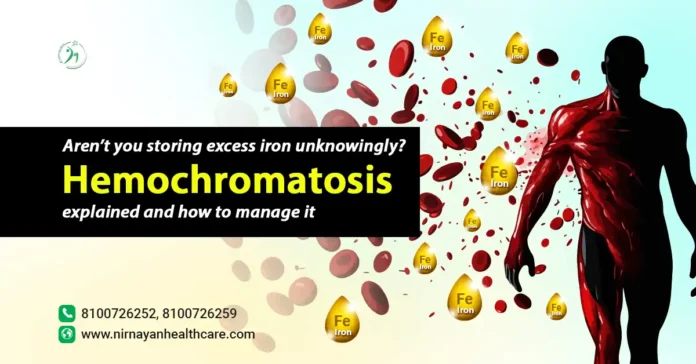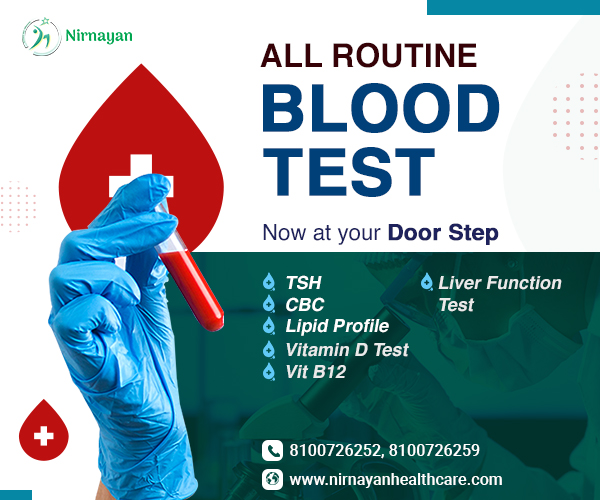Iron is essential for the human body—it plays a critical role in producing red blood cells, maintaining energy levels, and supporting overall health. But what happens when the body begins to absorb and store excessive amounts of iron? This condition, known as Hemochromatosis, causes the body to hoard iron, often silently, leading to long-term complications. Left untreated, iron overload can damage vital organs such as the liver, heart, and kidneys. Fortunately, with timely diagnosis and proper treatment, it can be effectively managed.
What is Hemochromatosis?
Hemochromatosis is a genetic disorder in which the body absorbs more iron than it needs from dietary sources. This surplus iron accumulates in various organs and tissues, potentially leading to organ dysfunction over time.
Iron is necessary for haemoglobin production—the protein in red blood cells responsible for carrying oxygen throughout the body. However, excessive iron becomes toxic, prompting health issues. Here, we have elaborately discussed the types, symptoms, and diagnosis of hemochromatosis.
Types of Hemochromatosis:
- Primary (Hereditary) Hemochromatosis:
This form is caused by mutations, typically in the HFE gene (Homeostatic Iron Regulator). It results in chronic iron absorption and storage in organs like the heart, liver, and pancreas. There are four subtypes:
- Type 1: Most common; symptoms often begin between the ages of 40–60.
- Type 2 (Juvenile): Develops in childhood and can cause early heart failure.
- Type 3: Symptoms typically emerge in early adulthood.
- Type 4 (Ferroportin Disease): Linked to mutations in the SLC40A1 gene; onset occurs in adulthood.
- Secondary Hemochromatosis:
Caused by other medical conditions such as chronic liver disease, multiple blood transfusions, or certain forms of anaemia.
Causes & Symptoms of Hemochromatosis:
The leading cause is hereditary mutation, often inherited from both parents. However, secondary causes include:
- Chronic liver diseases (e.g., Hepatitis C)
- Repeated blood transfusions
- Iron supplements or injections
- Kidney dialysis
- Certain anaemias (thalassemia, sideroblastic anaemia)
People with a genetic predisposition may worsen their condition through excessive iron intake or unnecessary supplements.
Symptoms vary and typically emerge in men after age 40, and in women post-menopause due to high iron levels. Common signs include:
- Joint pain or stiffness
- Fatigue and weakness
- Abdominal discomfort or bloating
- Darkened or bronzed skin tone
- Sexual dysfunction (e.g., erectile dysfunction)
- Irregular heartbeat or heart failure
- Liver problems and frequent infections
Why iron matters:
Iron is a critical mineral found in food and supplements. It helps produce haemoglobin and supports hormone regulation. But when iron builds up excessively, it can harm organs.
How do high levels of iron affect different organs?
Heart:
- Heart failure
- Arrhythmia
- Cardiovascular diseases
Liver:
- Fatty liver
- Cirrhosis
- Liver cancer or failure
Other complications:
- Diabetes
- Joint pain (arthritis)
- Hormonal imbalance
Risk Factors of iron overload:
Several factors increase the risk of developing hemochromatosis:
- Family history: A major risk for hereditary types.
- Age & Gender: Men over 40 are more susceptible; women are generally affected post-menopause.
- Alcohol intake: Exacerbates liver damage and iron accumulation.
- Frequent blood transfusions: Raise iron levels significantly.
How to diagnose Hemochromatosis?
Early detection is key to preventing complications. Diagnosis involves:
- Blood tests: Checking serum ferritin, transferrin saturation, and serum iron levels.
- Genetic testing: Identifies mutations responsible for hereditary hemochromatosis.
- Liver function tests: Assess liver health and potential damage.
- Liver biopsy (in advanced cases): Determines iron concentration and liver scarring.
- Therapeutic Phlebotomy: The most effective treatment. It involves routine removal of blood to reduce iron levels. Performed at medical centres or blood banks, this therapy mimics blood donation but is used medically.
- Iron Chelation Therapy: Recommended for patients who cannot undergo phlebotomy. Medications bind to excess iron, allowing the body to excrete it through urine or stool.
How to prevent Hemochromatosis?
Dietary Modifications:
Avoid iron-rich foods such as red meat, organ meats, and iron-fortified products. Limit Vitamin C intake as it enhances iron absorption.
Regular Monitoring:
Ongoing blood tests are essential to assess iron and organ health. For reliable diagnostics, contact Nirnayan Pathology Lab, Kolkata, for accurate and timely testing.
Conclusion
Hemochromatosis is manageable if identified early. Individuals with a family history or related medical conditions should undergo regular screenings and adopt preventive lifestyle changes. Do not ignore early symptoms. With timely intervention and proper management, one can live a healthy, fulfilling life despite this iron overload disorder.




